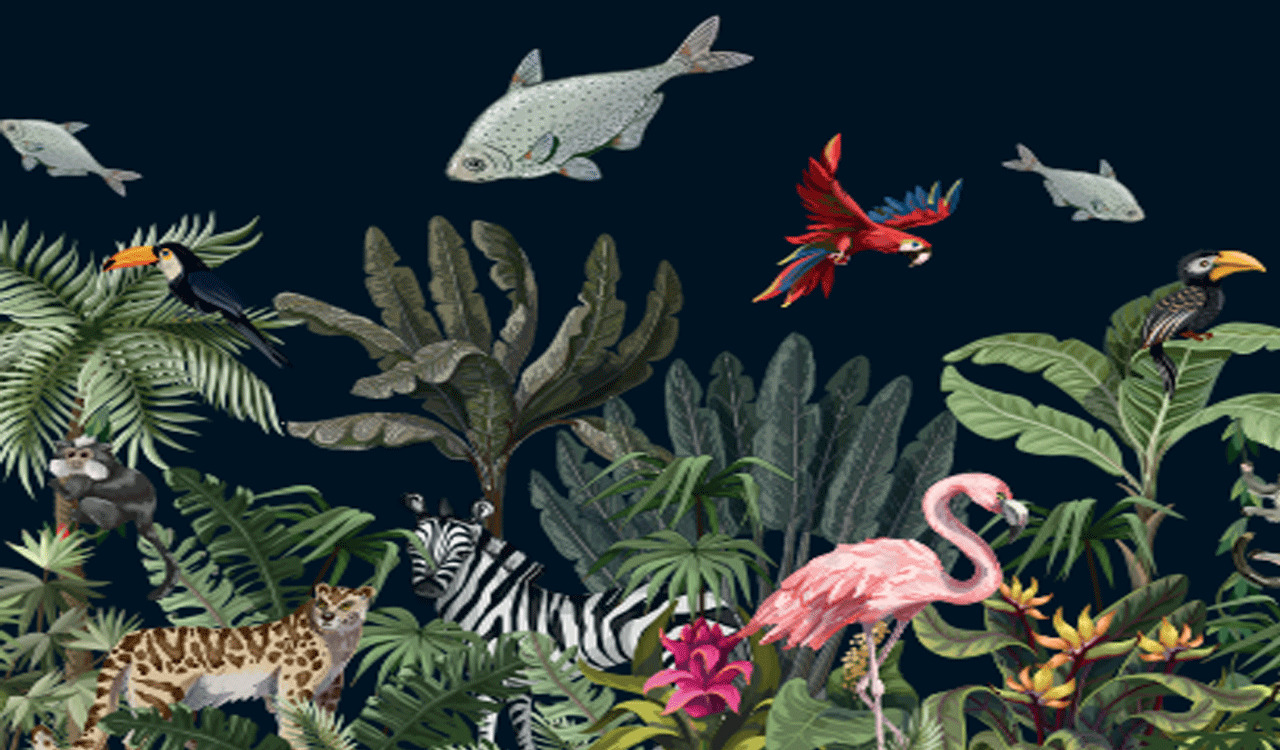
<!–
–>
The government brought in cactus moth caterpillars, which are natural predators of the cactus.
Published Date – 10 April 2024, 11:55 PM

By Tej Singh Kardam
Invasive alien species are animals, plants, pathogens and other organisms that are non-native to an ecosystem, introduced either naturally, accidentally or intentionally, to new areas.
They are able to adapt, become established, reproduce and spread, colonising the environment, creating new predators and impacting biodiversity, health and economy, hindering the growth of native species – altering habitats, competing for food and space, causing physical and chemical changes to soil, hybridising with native species, and introducing new parasites and diseases.
Threats Animals and plants move naturally across habitats and ecosystems. But when they move at a greater rate — either humans deliberately shift them or inadvertently transport them through shipments as part of globalisation and trade, a biological invasion is initiated.
Invasive species breed profusely far away from their original ecosystem, occupy more area and soon alter their new territories by displacing native species. Biological invasions have grown to such an extent that globally invasive alien species (IAS) are one of the five major drivers of change in nature.
The Intergovernmental Science-Policy Platform on Biodiversity and Ecosystem Services assessment report of last year mentioned that human ac- tivities have caused the translocation of about 37,000 alien species across the world.
Of them, more than 3,500 have negative impacts. The report warned that nature is declining globally at an unprecedented rate in human history — one million animals and plants are under extinction, and thousands may disappear within decades, which means accelerating species extinction.
IMPACTS GLOBAL INSTANCES
Zebra mussels arrived in the Great Lakes of North America, multiplied and have threatened native species. In 1949, five cats were brought to Marion Island in South Africa as pest control for the mice population. By 1977, there were 3,400 cats, endangering the local bird population. Silver carp fish came to the Missouri River and began feed- ing on plankton. Paddlefish, a native species, also feed on plankton but is now starving.
Brown tree snakes were accidentally brought to Guam island (in the Pacific Ocean), which was filled with birds, in the 1950s.
The snakes multiplied and are responsible for the extinction of nine of the island’s 11 forest-dwelling bird species. Water hyacinths have become invasive species in many parts of the world. It spread so quickly in Lake Victoria that boats could not get through it.
INDIAN SCENARIO
There are about a dozen high-concent invasive species which have already attacked 66% of India’s natural systems. They are most prolific in fragmented and deciduous ecosystems. Bitterwine invaded Manas and Kaziranga National Parks (NP), Central India. The giant sensitive plant spread over Kaziranga NP and Himalayan Foothills. Common cockle-bur invaded Nagarjun Sagar, Srisailam and Satya-Mangalam Tiger Reserve. Goat weed can be prominently found in the Himalayan foothills Terai.
Mesquite has spread over the Kutch, Thar and Deccan Plateau. Catweed invaded the Hi- malayas and the Western Ghats. Lantana is predominant in Nilgiri Biosphere Reserve and central In- dian highlands. Siam weed invaded Bandipur NP, Nagarhole and Madhumalai Tiger Reserves etc. Water hyacinth has clogged rivers, lakes and other water bodies.
As per a recent study by the CCMB, Hyderabad, researchers re- vealed a negative impact on native flora and fauna by the introduction of invasive species of elephants, goats and sparrows in the Andaman and Nicobar Islands. Scarcity of Food As per a recent study, about two-thirds of our country’s natural systems are in- fested with a dozen of invasive species.
This significantly reduces the food available for herbivores.
In the recent past, two elephants used to venture out from the Idukki Wildlife Sanctuary in Kerala and raid farms and homesteads in the adjoining panchayats.
They were raiding these places as food shortages became prominent due to the growth of lantana and weeping cassia in the Idukki forest.
The IAS — mesquite, sicklepod, lan- tana and goat weed — have reduced grasslands in Kunu NP in Madhya Pradesh. The Bandipur NP in Kar- nataka used to be a grazing ground for Indian bison and spotted deer, and a hunting ground for tigers and other carnivores but by 2005, lantana and parthenium took over the grasslands, shrinking the wildlife population. Eradication Governments across the world are trying to eradicate invasive species in different ways.
In Australia, the prickly pear cactus – native to the Americas – was growing out of control and de- destroying open space for grazing where ranchers raised livestock. The government brought in cactus moth caterpillars, which are natural predators of the cactus.
In Blackwater National Wildlife Refuge, Maryland, US, 8,500 nutria (rodents) were eradicated with the help of hunters by using GPS to track, trap and kill them. In India, successful attempts have been made to eradicate IAS in some of the States.
In Tamil Nadu, the Forest Department proposed a policy to control invasive species in 2021. It identified 23 priority invasive species of the 196 present in the State. In 2022, the State rolled out the Tamil Nadu Policy on Invasive Plants and Ecological Restoration, a first of its kind in the country. As per the recent report, during the restoration plan, Tamil Nadu has reclaimed more than 490 hectares of forest land from senna spectabilis (a plant species) in the Madhumalai Tiger Reserve.
These areas are seeing the natural revival of 15 grass species and 5 legume species. During these efforts, wild rice variety has also been found, which didn’t exist earlier.
In Mandla district of Madhya Pradesh, an initiative by an NGO helped in the eradication of lantana and restored 7,000 ha area comprising agri- cultural land, village common land and forest land in 18 villages. The lantana shrub was cut down, ground dug to extract deep roots, dried and burnt. For at least a year, it was monitored. If it grew back, the process was repeated.
At the international level, the United Nations Convention on Biological Diversity (UNCBD), 1992, emphasised the need to prevent the introduction of, and control or eradicate invasive alien species that threaten ecosystems and habitats.
During 2022, the Kunming-Montreal Global Biodiversity Framework, under UNCBD, agreed to reduce the rate of introduction and establishment of invasive alien species by at least 50% by 2030.
At the national level, the Ministry of Environment, Forest and Climate Change has launched the National Action Plan on Invasive Alien Species focusing on their pre-emption, early detection, control and management.
No place on the planet is left untouched by biological invasion, which is driving thousands of species into extinction. We, therefore, need a comprehensive approach to check the introduction of IAS, apart from their management and eradication which will go a long way in arresting and preventing any further extinction, thereby restoring the native flora and fauna for better ecosystem services.
<!–
–>
Source | Powered by Yes Mom Hosting






